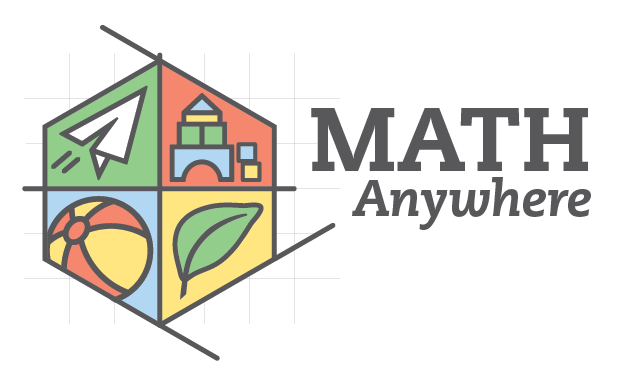When I was first brought on to help with materials for the Math Anywhere project a couple of years ago, it took me a while to wrap my head around the math games. When I was growing up, math was something scary that you did in school under the supervision of a professional. The idea of math as something fun and playful seemed foreign to me, until I realized that the “math” in these open-ended games was something much broader than equations on a chalkboard (where there most definitely IS a right answer). In fact, I discovered that I had already been playing these math games with my own kids without knowing it!
One of my favorite of these games is Which One Doesn’t Belong? because it reminds me of that old Sesame Street game. Except on Sesame Street at the end of the game, they tell you the “answer.” In today’s version of Which One Doesn’t Belong?, the four objects are deliberately chosen so that any of them could be the right answer. The video from the How-to page demonstrates that (videos on the How-to page are also available in Spanish):
At first, when I played this game with my own kids, my oldest (the overachiever who really loves being “right”) felt “tricked” that there was no one right answer. Her younger brother instantly loved it though, and immediately set about creating his own sets of four. Now that they are familiar with it, all the kids love this game, and even the 3- and 5-year-old enjoy playing.
If you want to start playing this game at home with some guidance, check out our printables. They will help you get a feel for how to choose objects in the groupings. You can play with your kids and make it a conversation, or send the older kids off on their own to write down their answers for some math + opinion writing time. If they really get into it (or you do!), you can also make your own games using our blank printables.
Here’s a video I took of my 5-year-old sharing her ideas for Which One Doesn’t Belong?:
You’ll notice how I don’t jump in with ideas myself, but I do prompt her to keep going and help her elaborate on her ideas. She comes up with ideas related to color, material (soft vs. hard), number of colors, and shape. Other ideas for these games can incorporate position (high/low/near/far), size, quantity, function/use and just about anything.
At this point you might be wondering: How exactly is this math?
These games are designed to help stimulate curiosity and critical thinking that is so key to math learning. They also help introduce math as something playful and fun that families can do together, so that kids (and their grownups) have a positive approach toward math. Our videos and printables are designed in particular for early learners (though they are fun for all ages). If your kids are older and you want to bring more traditional math into the play, check out the games on this site.
Special thanks to Christopher Danielson, author of the Which One Doesn’t Belong: A Shapes Book who started all this fun!

Melissa Burt
Guest Contributor
Melissa is a Graphic Designer & Copywriter at Educational Service District 112 who provides design for Math Anywhere’s printed and online materials. She is also the mother of four young math-curious kiddos.

